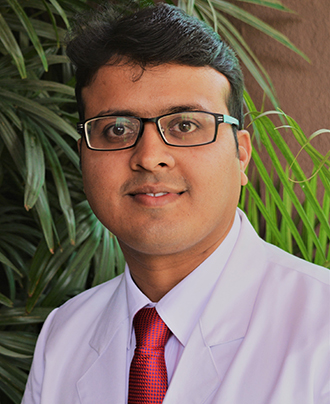Meet Our Doctor
Dr. Paresh Bang

Scoliosis Treatment In Nagpur

Scoliosis Treatment
Signs and symptoms of scoliosis may include:
- Uneven shoulders
- One shoulder bladt appears more prominent than the other
- Uneven waist
- One hip higher than the other
- One side of the rib cage jutting forward
- A prominence on one side of the back when bending forward
Risk factors
Risk factors for developing the most common type of scoliosis include:
- Age. Signs and symptoms typically begin in adolescence.
- Sex. Although both boys and girls develop mild scoliosis at about the same rate, girls have a much higher risk of the curve worsening and requiring treatment.
- Family history. Scoliosis can run in families, but most children with scoliosis don’t have a family history of the disease.
- Breathing problems. In severe scoliosis, the rib cage may press against the lungs, making it more difficult to breathe.
- Back problems. People who had scoliosis as children may be more likely to have chronic back pain as adults, especially if their abnormal curves are large and untreated.
- As scoliosis worsens, it can cause more noticeable changes — including uneven hips and shoulders, prominent ribs, and a shift of the waist and trunk to the side. Individuals with scoliosis often become self-conscious about their appearance.
Smaller bones in children are difficult to instrument. Use of navigation techniques allow intra-operative guidance about screw placement for better hold and to prevent complications related to misplaced implants.
Neuromonitoring: Intra-operative assessment of spinal cord function is possible by neuromonitoring. Neuromonitoring gives continuous feedback to spine surgeon during surgery about function of spinal cord and spinal nerves. If any step causes changes in nerve function, it can be immediately reversed by the surgeon.
Motion Preserving Correction: Various instrumentation devices are available which corrects the deformity without spinal fusion. This saves movements at instrumented levels and prevent back stiffness. However, these devices cannot treat severe curves. Also, their failure rate is high due to ongoing spine movement which puts continuous stress on these implants.
